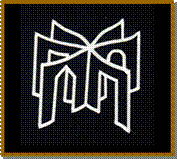Literature in the foreign language syllabus: Engaging the student through active learning / El rol de la literatura en la enseñanza de lengua extranjera: la implicación del estudiante en el aula a través del aprendizaje activo.
Keywords:
enseñanza de la literatura, aprendizaje activo / teaching literature, active learning.Abstract
Resumen:
¿Por qué es tan importante para el profesor de lengua extranjera en la actualidad hacer uso de la literatura en el aula? Esta comunicación destaca el papel de la literatura a la hora de implicar al estudiante en el aprendizaje de la lengua extranjera y hacerle practicarla. El aprendizaje activo es en este sentido un factor clave para motivarle a leer y trabajar con los textos literarios. Del mismo modo, el rol del profesor como facilitador y el uso de estrategias como el seminario socrático constituyen recursos efectivos para situar al estudiante como sujeto central de la enseñanza, consiguiendo así su implicación y haciendo el aprendizaje más personal, significativo y memorable.
Abstract:
Why is it so important for foreign language teachers today to use literature in the classroom? This paper highlights the benefits of literature in making students more discerning users and consumers of language. Active learning is in this sense a key factor in engaging the learner with the literary works. Likewise, the role of the teacher as a facilitator and the use of strategies such as the Socratic Seminar constitute effective ways to shift the balance from teacher-centered to student-centered instruction, thus increasing students’ engagement and providing forums for learning to be more personal, meaningful, and memorable.
References
Collie, Joanne; Stephen Slater. Literature in the Language Classroom: A Resource Book of Ideas and Activities, Cambridge University Press, Cambridge, 2007.
Koritz, Amy. “Beyond Teaching Tolerance: Literacy Studies in a Democracy”, Profession, 2005, pp. 80-91.
McEwan, Ian. The Daydreamer, Random House, New York, 1994.
Meyers, Chet; Jones, Thomas. Promoting Active Learning: Strategies for the College Classroom, Jossey-Bass, San Francisco, 1993.
Nance, Kimberly A. Teaching Literature in the Languages, Prentice Hall, Boston, 2010.
Norton, Donna E. Multicultural Children’s Literature: Through the Eyes of Many Children, Pearson, Boston, 2009.
Rice, Linda J. What was it like? Teaching History and Culture Through Young Adult Literatue, Teachers College Press, New York, 2006.
Scholes, Robert. Textual Power: Literary Theory and the Teaching of English, Yale University Press, New Haven, 1985.
Swaffar, Janet. “Major Changes: The Standards Project and the New Foreign Language Curriculum”, ADFL Bulletin, 30 (1), 1998, pp. 34-37.
Woodson, Jacqueline. The Other Side, G.P. Putnam’s Sons, New York, 2001.
Young, Katherine. A. Constructing Buildings, Bridges, and Minds: Building an Integrated Curriculum through Social Studies, NH: Heinemann, Portsmouth, 1994.
Downloads
Published
Issue
Section
License

Tejuelo is published with license Creative Commons Reconocimiento-NoComercial-SinObraDerivada 3.0 España.


.jpg)



